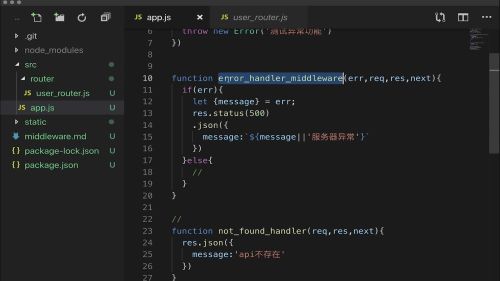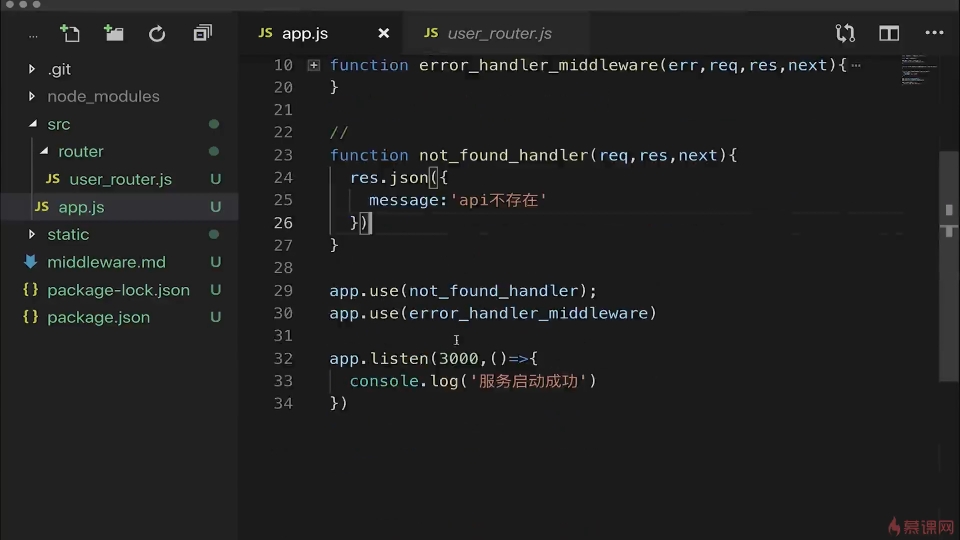-

- UFO2015 2023-09-18

try {} catch (error){ next(error) }
Promise.then().catch(error => next(error))// 可以简写成,next 参数与 catch 一致
Promise.then().catch(next)
- 0赞 · 0采集
-

- UFO2015 2023-09-18

404 error
异常处理中间件,必须放在 router 的最后面
这样才能做到兜底
- 0赞 · 0采集
-

- 儇鑫忻梓 2022-04-07
const express = requre(express)
const app = express()
app.get('/demo',(req.res)=>{
thorw new Error('测试异常功能')
})
funtion error_handler_middleware(err,req,res,next){
if(err){
res.status(5000).json({
message:'服务器异常'
})
}
}
app.use(error_handler_middleware)
app.listen(3000,()=>{
})
- 0赞 · 0采集
-

- 我的昵称嗯嗯 2021-08-13
promise里的catch需要一个error参数的函数,而处理异常时next刚好是一个参数为error的函数

- 0赞 · 0采集
-

- 我的昵称嗯嗯 2021-08-13
当发现在middleware里有异常时,通过next(error)传到下一层

- 0赞 · 0采集
-

- 我的昵称嗯嗯 2021-08-13
处理不存在的路由,放在最外层

- 0赞 · 0采集
-

- 我的昵称嗯嗯 2021-08-12
中间件处理异常细节

- 0赞 · 0采集
-

- 我的昵称嗯嗯 2021-08-12
中间件处理异常,放在所有链式之后

- 0赞 · 0采集
-

- qq_象罔_0 2020-12-18
不错不错@@
- 0赞 · 0采集
-

- 小鸟搬砖 2020-08-12
- <h4>根据回调的传参个数判定回调函数是否为异常处理函数还是正常路由处理函数。</h4><p>express框架层面应该做了识别处理,<br/>如果你给app.use传递一个有四个传参 的回调函数,那么express认为此回调函数是错误处理函数,那么回调函数传参依次为 :<code>err,req, res, next</code>;<br/>如果你给app.use传递一个有三个传参的回调函数,那么express认为此回调函数是错误处理函数,那么回调函数传参依次为 :<br/><code>req, res, next</code></p><p><br/></p>
- 0赞 · 0采集
数据加载中...




